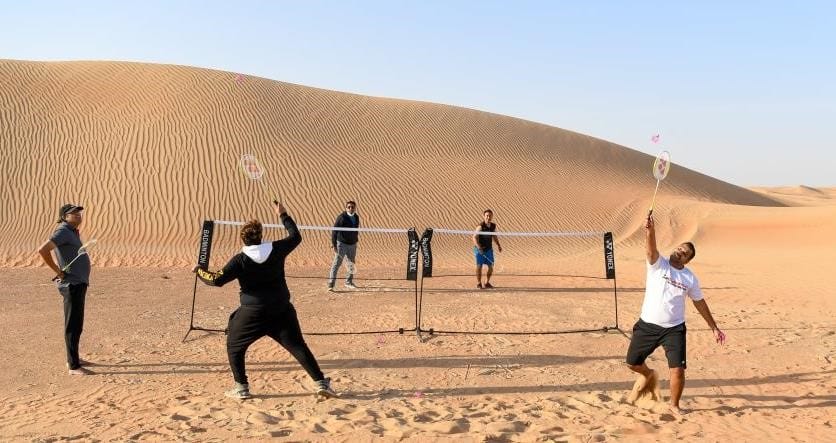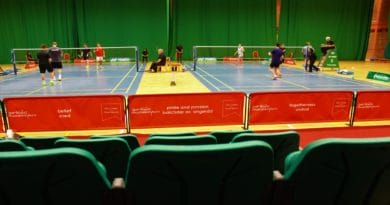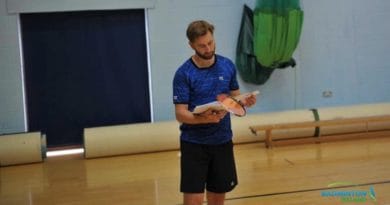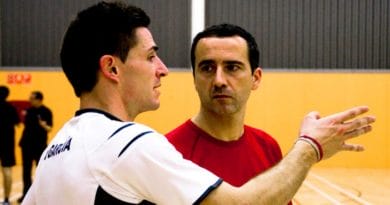Error prevention rather than error correction : Part 1
Coaches, how much of your practice time is used in the correction of technical ‘errors’?
Wouldn’t you rather be developing great playing skills than correcting errors?
I’m concerned that you may be using a high percentage of time to change or correct techniques
Is it possible to work in such a way that prevents or limits any future issues?
(especially with novice players)
– – – – – – – – – – – – – – – – – –
1. My assumptions … do you agree?
2. A quick story
3. How to define these technical limitations/ errors
4. Why they may occur in novice players
5. Do you want a challenge!
6. What’s next
– – – – – – – – – – – – – – – –
1. My assumption … do you agree?
 I have this assumption that many coaches spend far too much of their coaching time correcting players’ techniques.
I have this assumption that many coaches spend far too much of their coaching time correcting players’ techniques.
Some coaches believe that they are experts at this, and I respect their view. However how many are experts at ‘error prevention’?
This post is aimed at those coaches who work with players during years 1 -5 of their development.
It’s during these years of a player’s introduction to badminton that many of the essential techniques can be positively influenced or negatively affected by the players’ experiences, practices and coaching methodologies.
Would you like a challenge?
Later in this post you’ll be asked to create a list of the technical errors that you often see in young players. Those techniques that believe will limit or hinder future development. The ones that you wished had never to have been established.
Do you have some in mind right now?
Grab a pen and make a quick note before you forget 😉
Would you rather spend time developing great skills than trying to correct technically limiting errors
How would you go about that?
– – – – – – – – – – – – – – – –
2. A quick story
Years ago I was approached by a coach asking for tips on error correction, specifically for players that he had coached since they were beginners.
He passionately described problems they had with grips, overhead hitting and lunging. He also outlined issues with flicking on both the forehand and backhand sides.
I was surprised at how easily he listed their faults and the amount of details he used to describe what they were and when they happened. He also spoke about how frustrated he was because he couldn’t find information on how to correct these problems.
“All the information I find is on how to teach these strokes”, he said
“where is the information on how to correct technical faults”
It set me thinking about the amount of practice time coaches spend “correcting” rather than developing. Should coaching manuals contain advice to coaches on how to change or correct techniques? What do you think?
In order to do this, the manual would have to not only list these common faults but offer guidance on how to go about changing the technique. The guidance could possibly be more complex for correction than it would be for stroke introduction, but I’ll leave that discussion for another time.
In this post, we also won’t address what the correct or ‘perfect’ technique looks like. However, I’m sure that you can easily suggest what techniques (the bad ones) would hinder or prevent future development and make effective progression difficult. I’m referring to the list that you may have already started to write 🙂
– – – – – – – – – – – – – – – –
3. How to define these technical limitations/ errors
Before I say more, it’s important to define which issues I am suggesting that take up too much of your practice time. I’ve touched on it above but I think it’s worth some more time to understand the issues.
The techniques we need to consider are those that may limit a player’s future development
Unfortunately often seen in players who learn the game without any reference to what good players look like or any helpful guidance
I am not suggesting that all players need to fit a perfect model of technique, I’m sure that a ‘perfect model’ doesn’t even exist. There must be a wide bandwidth of techniques that can be used to play our game. If you look at players in high-level tournaments you will easily see a range of subtle differences in technique. However, these players aren’t limited by their techniques.
I’m also not suggesting that technique errors only come from players who developed without role models or guidance. These critical technical ‘errors’ also appear with players who receive regular coaching, but more about that later.
I’m suggesting that there may be a number of core technical aspects that if not prevented from being established could …..
- prevent or hinder the development of specific strokes or future development of more refined movements and actions
- result in a reduction of power
- cause injury when power or faster movements are required
- reduce tactical development
- reduce motivation and desire as the existing techniques do not easily allow for future development
I’m not talking about the smash or clear out the side of the court, or the cross block that keeps clipping the top of the net and falling back into the court.
Can you think of techniques that if left as they are, can reduce the effectiveness of future development, or may even prevent it 🙁
– – – – – – – – – – – – – – – –
4. Why they may occur in novice players
 Players who discover their own techniques
Players who discover their own techniques
Some are the results of a player finding the ‘best way’ to achieve the outcome they want when first starting to play.
The easiest way to play badminton often results in techniques that can severely limit future development. These ‘self-discovery’ techniques may not provide the best outcomes if future performance is a goal.
If you’ve watched people first experience playing badminton have you seen the methods (the techniques) that they use to strike the shuttle? There is a logic behind most of what they do, unfortunately, this type of play often prevents or limits future development of power, variation, and may even cause injury.
How often have you seen
Players striking overheads from in front and just above their head or around eye level to help with timing
- this creates a short bent arm, ‘push’ type racket movement with vastly reduced power
Rackets having all the strings facing the shuttle in early preparation to help with contact as it’s harder to miss
- this creates a ‘panhandle’ type grip
Grips where a finger is placed pointing up the handle to aid racket stability
- this reduces power and limits grip change
Players step forwards onto the non-racket leg in preparation for an overhead to reduce complex movements when striking
- this radically changes the preparation footwork position
As above, with all the bodyweight on the front leg and with the back leg in the air just before striking an overhead
- this reduces ant ‘lift off the ground’, power and the ability to move backwards whilst striking the shuttle
Underarm throws with big preparations behind the body
- this is harmful to flicking techniques and limits the skill of striking at a comfortable extreme range
Players who are ‘coached’
It is possible that some of the issues above can be created by a coach!
This may sound strange to you and challenge your beliefs if you are a coach.
Do you agree that some coaching methodologies could be the cause of technical errors?
There are several reasons why this could happen
- Introducing overhead hitting as an early goal for novice players
- Believing that any technique errors can easily be ‘corrected’ later
- Not appreciating the impact of some inappropriate techniques on future development
- Being unaware of the developing ‘inappropriate’ technique
- Not having a plan for stroke/movement development with an aim of ‘error prevention
Why do you think these classic novice technique error occur
is it all due to self-discovery or could it also be through coach methodologies?
– – – – – – – – – – – – – – – –
5. Do you want a challenge?
 Could you write down a list of the technical things that players do on the court that you believe constrain or limit, even prevent future development?
Could you write down a list of the technical things that players do on the court that you believe constrain or limit, even prevent future development?
I am not asking for things like, ‘they are not fit enough’ or ‘they don’t move faster enough’
Try and create a list of classic technique errors that you see but wished did not appear in novice players. Those that have the possibility to limit future development of power, variation, and may even cause injury. If you find yourself including tactical issues then use that information to create a separate list.
This is the start of our error prevention debate. Before we can create coaching strategies to prevent these inappropriate/developmental limiting issues we must first understand what they are.
Pick up a pen & paper or open up a document on your phone. How many can you write 3, 5 or even more, I hope
In the next few posts, I’ll share my list 🙂
Why not start a conversation with a friend, compare lists and see what you come up with!
– – – – – – – – – – – – – – – –
6. What’s next
I’ve challenged myself to create a series of posts all concerning the theme of Error Prevention rather than Error Correction.

I promise to share my list and to examine and explain…
- Why it’s important to recognise and identify technical faults
- The questions to ask yourself before you do anything
- Classification of errors : 3 types
- Recognition difficulty and Impact assessment guides
If you’d like to share your list with me that would be great. Or, maybe you’ve read something that you disagree.
Why don’t send me an email love to hear your views contact@badmintonandy.com


 Players who discover their own techniques
Players who discover their own techniques


